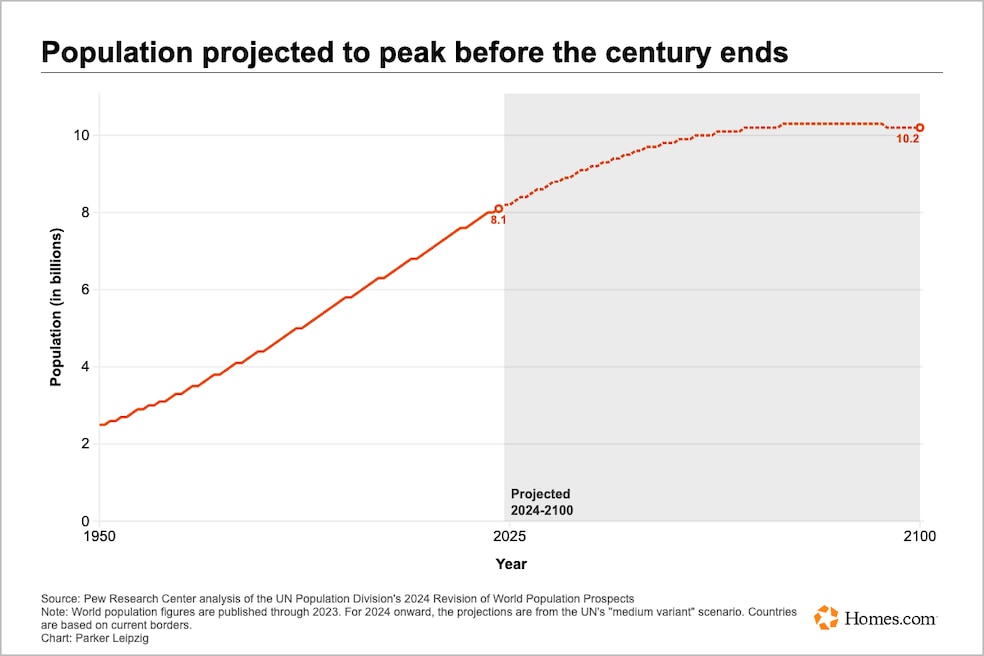A Pew Research Center analysis of the United Nations' World Population Prospects projects the global population to slow until 2100.
While the world population is expected to peak and slow in growth by the end of the century, some countries may experience population growth that does not align with the overarching trend.
India, currently the fastest-growing country in terms of population, is expected to expand, remaining the most populous at the end of 2100. This contrasts with the UN's projections for China and the U.S., the other countries in the top three most populous countries.
China's population is predicted to decrease by more than half, from 1.4 billion to 633 million.
The U.S. is forecasted to have much slower, steadier growth, which will drop its ranking from the third-most populous country to the sixth by 2100.
Smaller populations can be attributed to a variety of factors, including enhanced urbanization and economic development, according to Manolo Corichi, a research analyst at Pew Research Center.
"Decreases in fertility rate are associated with economic development, meaning that as countries get richer, birth rates tend to slow down," Corichi told Homes.com. "This has typically led to smaller and aging populations."
Other factors impacting population trends around the world include higher educated, wealthier women having children at later ages, uneven economic opportunities and quality of life, and high childcare costs leading to families opting out of having children altogether.
Housing availability is already an issue in the U.S., with a shortage of more than 4.5 million homes, according to a report from the U.S. Chamber of Commerce. Slower growth may sound like an easing in the housing shortage crisis, but the UN estimates the country's population will still increase by 74 million in the following decades.
New home construction does not seem to meet the current demand. However, current mortgage rates stuck at 6% for a traditional 30-year mortgage have deterred many from adding on the extra expense of a newer home, opting to wait for more existing homes to come onto the market.
Currently, the large aging population has a strong hold on existing homes and is not enticed to move amid high rates, creating the lock-in effect.
The housing stock has aged rapidly in the last 20 years. The median age of owner-occupied housing reached a new high at 41 in 2023, up from 31 in 2005, according to a National Association of Home Builders' analysis of American Community survey data.
In fact, the U.S. ranks among the oldest third countries with its current median age of 39, which is expected to rise to 45 by 2100, according to Corichi.
"The share of Americans aged 65 and older is also projected to increase, from 18% of the general population in 2025 to 28% in 2100," he said. "Correspondingly, the share of Americans under 25 will drop from 30% to 25%, and the share of those aged 25-64 will decrease from 51% today to 47% at the end of the century."


